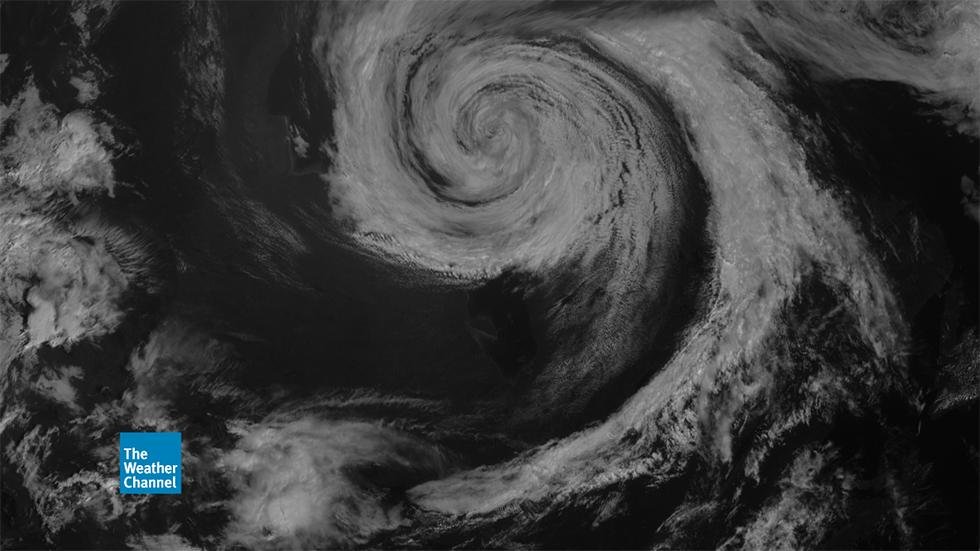
© The Weather ChannelVisible satellite image of the Hudson Bay, Canada, storm on August 10, 2016 at 10:45 a.m. EDT, showing the occluded storm's "apostrophe" shape.
A strong storm in Canada Wednesday was easily the most interesting feature in satellite imagery, grabbing the attention of meteorologists and weather geeks alike.
This extratropical storm intensified Tuesday over Hudson Bay, eventually reaching peak strength Wednesday, before weakening Thursday.
A visible satellite image showed the storm's classic mature phase as a cold occlusion, with relatively cool air completely wrapped around the low center, and a trailing band of clouds ahead of the cold front, resembling an apostrophe or the number 9.
Here is what the frontal structure of this storm looked like Wednesday, courtesy of NOAA's Weather Prediction Center.
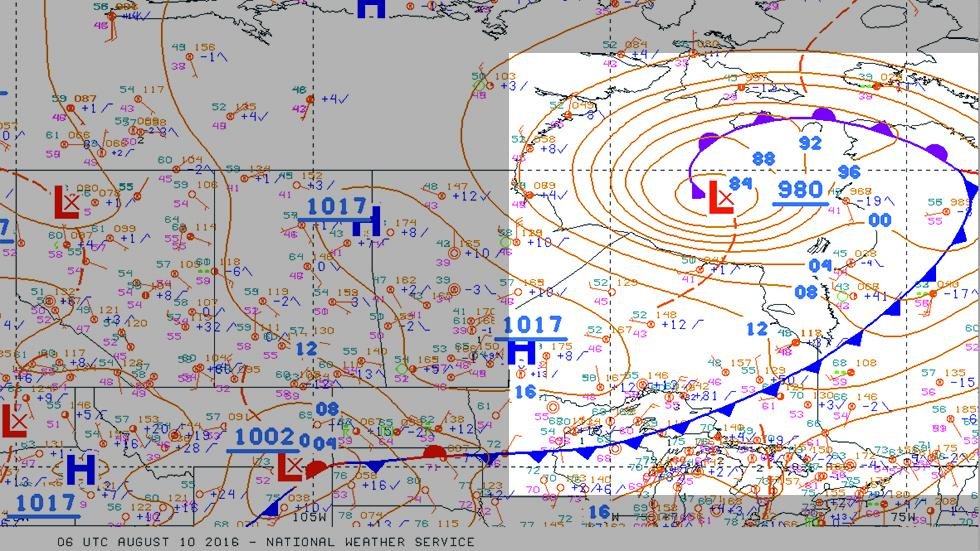
© NOAA/NWSSurface frontal analysis, with the Hudson Bay, Canada, storm highlighted, on August 10, 2016, at 2 a.m. EDT.
The storm's central pressure dipped to a low of 980 millibars early on August 10. This wasn't a case of "
bombogenesis" because the storm's pressure dropped only about 23 millibars in 36 hours.
You wouldn't expect that kind of storm in the Northern Hemisphere in August anyway, as north-to-south temperature contrasts fueling the development of extratropical storms are at a minimum in the heart of summer.Now, let's zoom in on this beauty, starting with a visible satellite loop from Wednesday, Aug. 10.
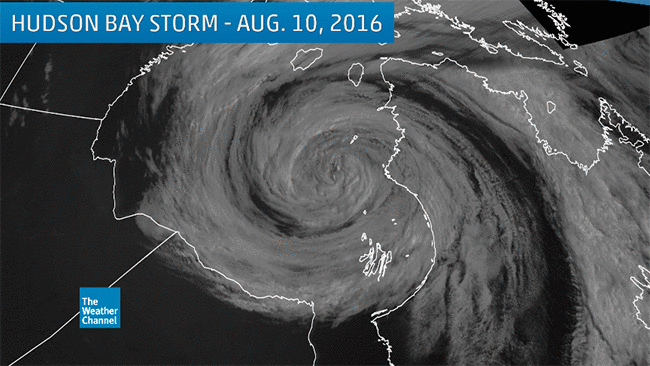
© The Weather ChannelVisible satellite loop of the Hudson Bay, Canada, storm on August 10, 2016.
With deep, relatively cool air wrapped completely around the low, you wouldn't expect deep thunderstorms in that circulation.
Therefore, the infrared satellite image shows some interesting structure in the core of the storm, but may not strike you as spectacular as, say, hurricanes or summer's thunderstorm clusters,
mesoscale convective systems.
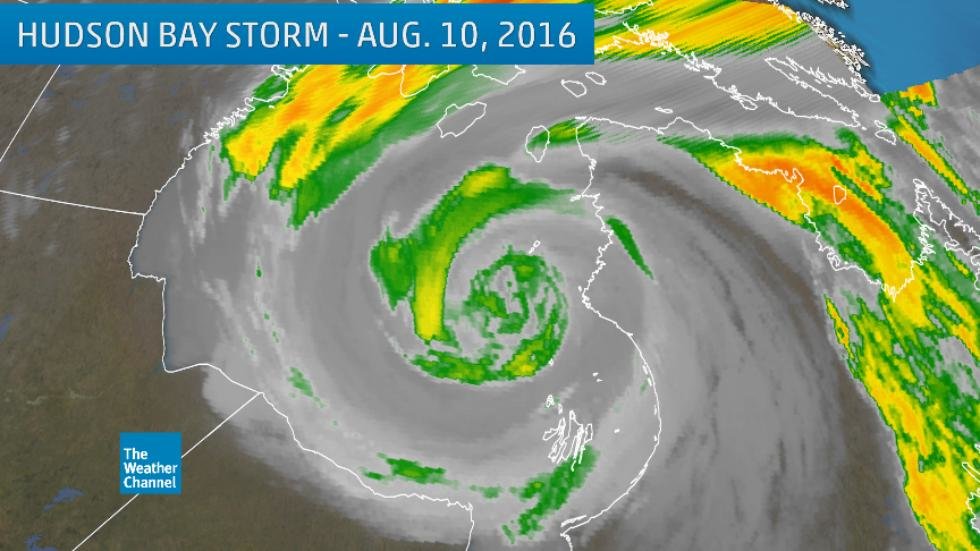
© The Weather ChannelInfrared satellite image of the Hudson Bay, Canada, storm on August 10, 2016. Higher clouds tops are shown by green, yellow and orange shadings.
However, looking at satellite imagery used to show water vapor content, this storm really leaps off the page, as pointed out by the satellite gurus at the University of Wisconsin's Cooperative Institute for Meteorological Satellite Studies.
By zooming out and taking off the political borders, the storm, coupled with a dark slot of drier air to its south, resembles the side view of a face.
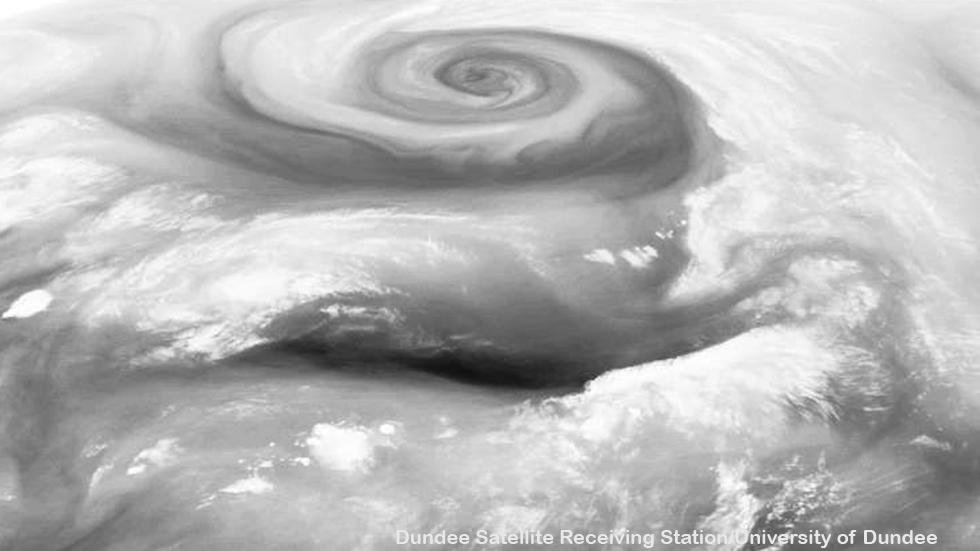
© Dundee Satellite Receiving Station/University of DundeeWater vapor satellite image showing the Hudson Bay, Canada, storm on August 10, 2016, resembling an eye of a face.
In water vapor images, an occluded storm like this often resembles a cinnamon roll, with drier air (darker shading) ingested in circular plumes surrounding the more moist air (whiter shading).
This storm's wind field was quite impressive, as shown by the European model analysis from Wednesday morning.
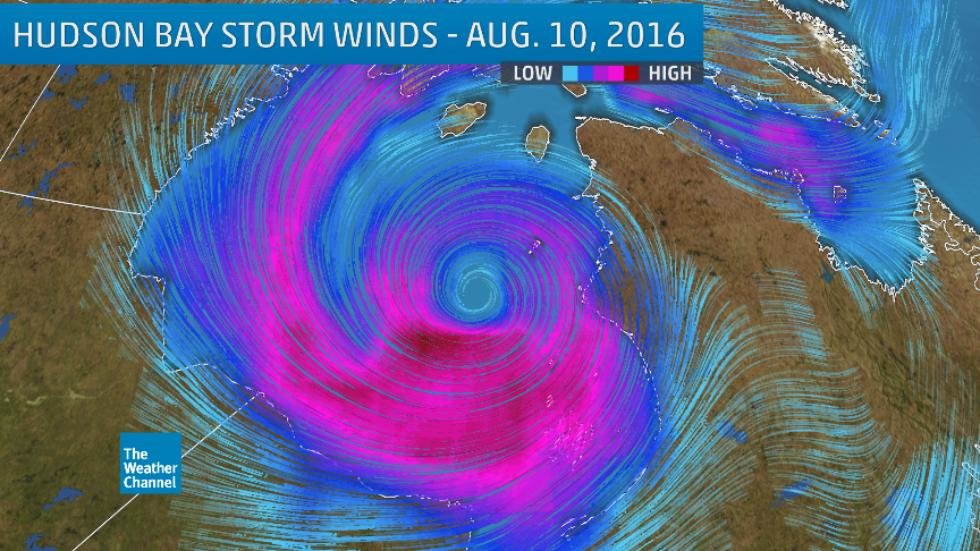
© The Weather ChannelECMWF model surface wind streamline analysis of the Hudson Bay, Canada, storm on August 10, 2016. The strongest surface winds are indicated by darker purple streamlines. The low-pressure center is indicated by the hole in the wind field over Hudson Bay.
According to NOAA's Ocean Prediction Center,
storm-force winds up to 64 mph were analyzed on the southwest flank of the storm on Aug. 10, using data from the advanced scatterometer (ASCAT).
Typically, these storms are more common in and near the Lower 48 states from fall through spring, producing snowstorms, high wind events, coastal flooding, even occasionally spawning severe weather outbreaks. Even by Canadian standards,
this was a fairly impressive storm for mid-August.And it gave meteorologists something to admire.









how its contours almost perfectly match the outline of the bay.